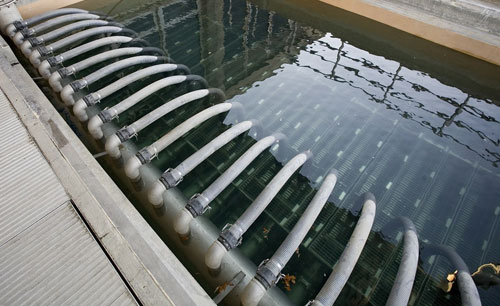Basin collection troughs are integral parts of wastewater treatment processes, as the water discharged from the troughs eventually reaches the outlet channel. The water level is usually close to the critical depth for the process, and the proper design of these troughs can be crucial to the viability of the process.In planning and evaluating a clarification system, side water depth is a key consideration. This depth should allow the clarifier to hold enough solids to process the influent stream, but not too much. Inadequate solids-holding depth can lead to gross carryover of solids into the effluent, reducing the effluent quality. Additionally, it's important to consider the additional depth necessary for the clarifier to handle mixed liquor suspended solids.
Depending on the location of your home, you might have to purchase an STP to handle your sewage. Generally, residential buildings need at least one STP to treat sewage. Many STPs are located underground, making them difficult to maintain. Moreover, you may not be able to inspect them without hiring an expert. It is better to consult a professional if you have any doubts about the process.
Importance of side water depth in planning and evaluating clarifiers
Sided water depth is one of the most important design parameters when choosing clarification equipment. Without enough depth for solids to settle in, there will be a significant gross carryover into the effluent. In addition, it is important to consider the additional depth required to handle mixed liquor suspended solids.
The side water depth of a clarification tank depends on the type of waste and the purpose of the treatment. The side water depth is measured near the wall of the unit. Ideally, it should be at least one meter. You can choose a smaller side water depth if you are storing grit.
Side water depth is essential for orderly and safe operations. If the side water depth is inadequate, the solids can accumulate in the side water and interfere with the proper operating procedures. Aside from safety, proper side water depth is also important for quality functionality. There are a few situations where side water depth needs to be higher than average.Side water depth is essential for orderly and safe operations. If the side water depth is inadequate, the solids can accumulate in the side water and interfere with the proper operating procedures. Aside from safety, proper side water depth is also important for quality functionality. There are a few situations where side water depth needs to be higher than average.
Clarifiers and sludge thickeners are also important in the design of a wastewater treatment plant. They can affect the performance of aerobic and anaerobic digesters. Proper sludge system design will optimize the performance of the clarifier.
Importance of side water depth in evaluating clarifiers

The selection of side water depth depends on the application of a clarification unit and the solids inventory in the wastewater. Insufficient side water depth can cause gross carryover of solids into the effluent and reduce the effluent quality. In addition, it is important to consider additional depth for handling mixed liquor suspended solids.

Side water depth is critical for safe and orderly operations. When side water depth is insufficient, it may cause overflow and a failure to follow proper operating procedures. Side water depth is also essential for good functionality. Some situations may require more or less side water depth.
In drinking water treatment, residual aluminium levels can affect the water quality. The presence of residual aluminium in water is a problem for public health. To address this issue, Jekel, Heinzmann, and Hudson conducted studies on the behaviour of residual aluminium in water clarifiers. Their results were published in JWSRT-Aqua.







































Share Post